Built in 2021, the Wade & Kris Eldean Wildlife Exhibit offers outdoor viewing of five different animals that are native to Michigan . Informational signs in front of each animal’s enclosure discuss interesting aspects of their natural history. It is free to visit, and animals can be viewed during Visitor Center open hours.
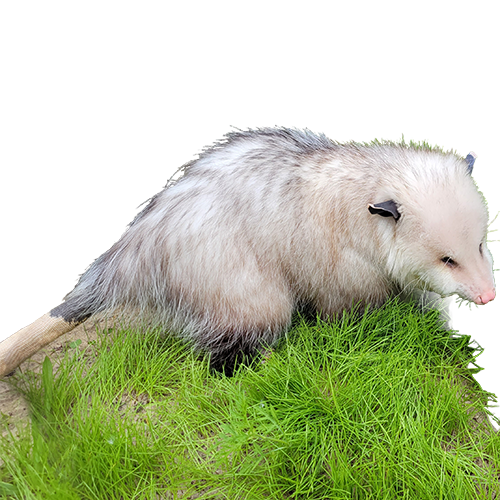
Placeholder
The Virginia Opposum is the only species of marsupial (pouched mammals) in the US. Female opossums use their pouch to carry up to 20 babies! They have 50 teeth, which they show when feeling threatened. They will also “play opossum” and pass out under extreme stress.
oportunistic omnivorous scavenger; will eat small vertebrates, insects, plant matter, fruits, and seeds. They even eat ticks!
From Costa Rica to Southern Canada; comfortable in urban setting and range expanded by the presence of humans.
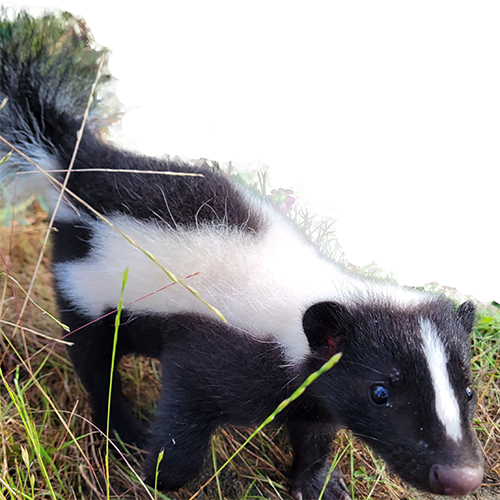
Placeholder
Striped skunks are famous for their ability to spray foul-smelling musk. Skunks have two scent glands at the base of their tail and can aim the musk, either as a stream that arcs through the air, a fine mist cloud, or a direct shot to the face of an intruder.
Omnivorous; prefers insects and digs up ground-nesting bees and grubs, also eats worms, eggs, amphibians, and plant matter including berries, nuts, and roots.
Throughout most of the US and Souther Canada; frequently found in residential and urban settings.
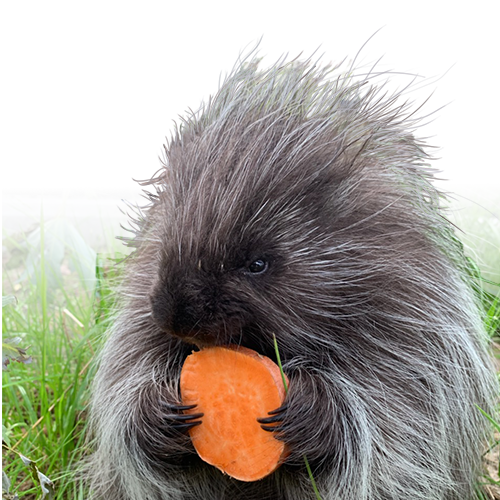
Placeholder
Porcupines have around 30,000 quills – but they can’t shoot them! Porcupines defend themselves by escaping into trees, having black-and-white warning coloration, and emitting a foul-smelling musk. Quills act as a defensive shield against predators, and porcupines can drive quills into the body of an attacker, but they cannot launch quills through the air!
Herbivore; will eat bark and twigs of maples, ashes, beechwood, and birch trees; also eats raspberries, grasses, and apples.
Found throughout Canada and south to Northern Mexico in the West, Northern parts of the US in the eastern regions.
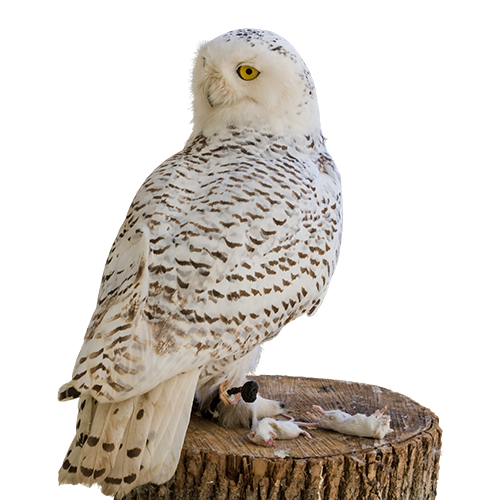
Placeholder
Info Coming Soon
Info Coming Soon
Info Coming Soon
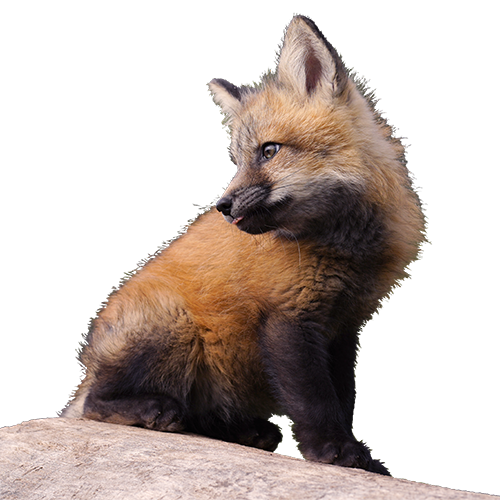
Placeholder
Redfoxes are the most widespread wild carnivore worldwide. They can live in a wide variety of habitats: desert, artic tundra, and urban neighborhoods.
Omnivorous: eats small rodents, other mammals, birds, reptiles, insects, and fish as well as many types of plants including berries; acorns; and grasses.
Widespread throughout the US and Canada.
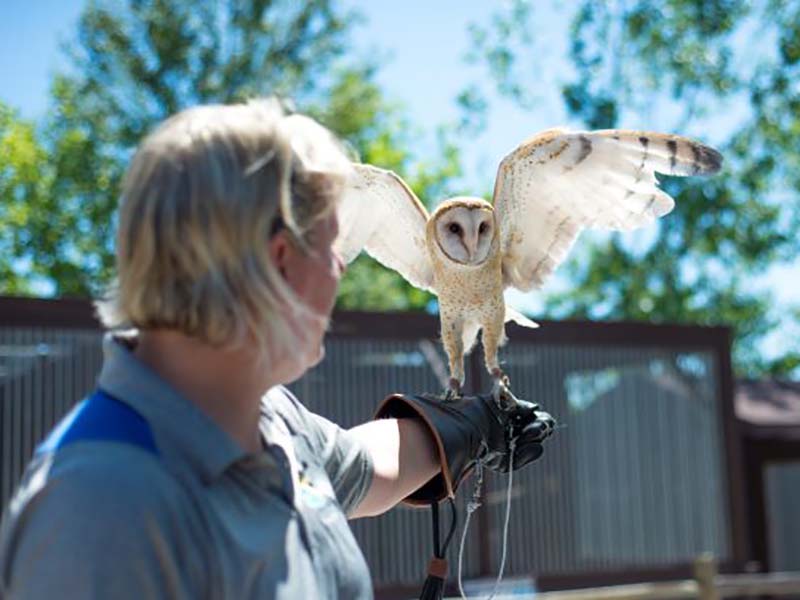
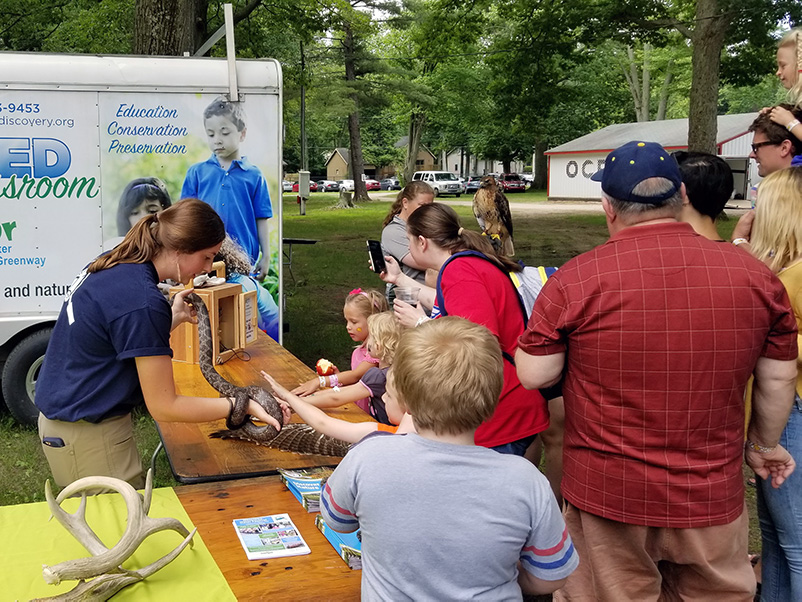
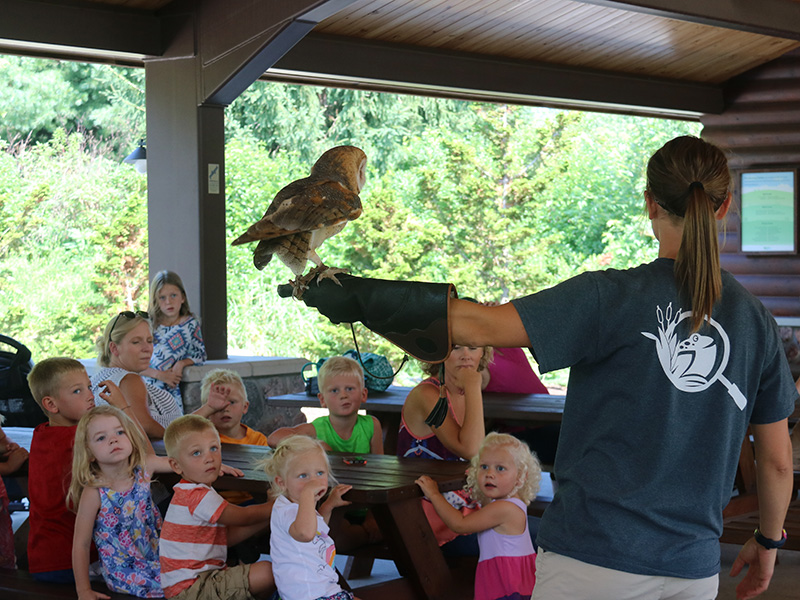
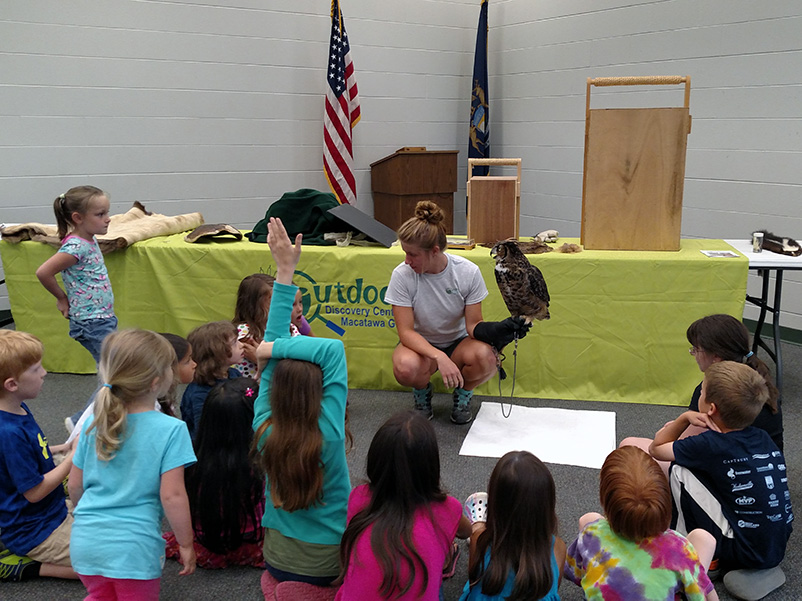
Our animal ambassadors allow us to offer a variety of educational programs to the public. From community events to school visits, wildlife booths and more, we’re sure to have an experience that’s right for you! Check out our Programs page or get in touch with us to learn more.
A bird of prey, also known as a raptor, is a carnivore that hunts other animals. It differs from other birds that eat animals because raptors catch prey with their feet. Their keen eyesight helps them find their prey while their sharp beak and talons allow them to catch and kill their prey.
All of the birds housed in our facility have been permanently injured or disabled meaning they can not return to the wild. We maintain permits with the Michigan Department of Natural Resources and the United States Fish and Wildlife Service to house the birds and use them for educational purposes.
The ODC does not have a wildlife rehabilitation license, and cannot take in injured wildlife. All of our birds come from state licensed rehabilitators who determined the birds would not survive on their own. If you find an injured bird or another wild animal, you can look up a licensed rehabilitator at michigandnr.com/dlr.
We feed our birds over 15,000 items each year including mice, rats, quail, and fish. Birds of prey don’t drink water! They get all the water they need from their food. The water bowls you see out in warm seasons are for bathing.